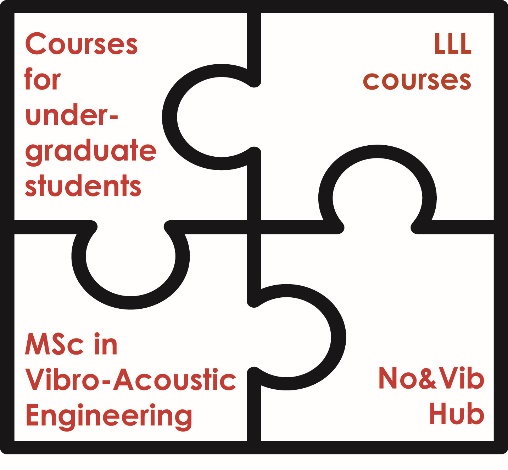PROJECT
Project ID
Project Acronym: SENVIBE
Project Title: ‘Strengthening Educational Capacities by Building Competences and Cooperation in the Field of Noise and Vibration Engineering’
Project Call: Erasmus+ Capacity Building in Higher Education EAC/A05/2017
Project Reference Number: 598241-EPP-1-2018-1-RS-EPPKA2-CBHE-JP
Grant Agreement Number: 2018 – 3226/ 001 – 001
Project Duration: 15/11/2018 – 14/11/2022
Coordinating Institution: University of Novi Sad, Serbia
Project Coordinator: Professor Ivana Kovacic, University of Novi Sad, Serbia
Specific Project Objectives
The wider aim of this SENVIBE project is to improve and build national educational capacities, cooperation and competences in dealing with environmental and occupational noise and vibration (No&Vib) engineering issues in accordance with ongoing EU integration strategies and the needs identified in Serbia.
There are four Specific Project Objectives (SPOs):
SPO1. To modernise existing courses in the field of No&Vib as well as to develop and implement new courses tailor-made for students of undergraduate programmes of six different engineering departments (Environmental Engineering, Occupational Safety Engineering, Mechanical Engineering, Electrical Engineering, Civil Engineering and Traffic Engineering);
SPO2. To create and implement two types of Life-Long Learning (LLL) courses for practitioners in the fields of No&Vib Engineering, Environmental Protection and Occupational Safety;
SPO3. To develop and implement a new MSc programme in Vibro-Acoustic Engineering (VAE), enabling students to strengthen their knowledge and build specific soft skills in three different sub-disciplines: i) Environmental Noise and Vibration, ii) Acoustical Engineering and iii) Vibration Engineering;
SPO4. To establish a No&Vib Hub – a central unit launching and facilitating strategic cooperation among the key stakeholders engaged in No&Vib management: academia, local industry and local and national authorities.
Besides these aims, all the educational activities are also accompanied with the additional aim to introduce new teaching methodologies, including the use of e-tools and b-learning approaches, aiming either at facilitating more intesive interaction between teachers and students/trainees or enabling them to fit the activities planned into their everyday activities with a possibility for distance learning or repetitive insights into learning material, including experiments, via an ICT platform that will be created. The equipment will be either modernised when it exists, or a new one will be installed if the HEI does not have it. The current teachers and university staff, including technicians, will be trained on the new courses, methodologies and equipment.


